We know the days are waning when we still can walk my way through the densest sections of our forest – with the trees and bushes nearly leafless and the thorn briars less resilient (and with no worry of creatures underfoot). The ripping thorns and the twist of vines and branches remind me of the messiness of our private and public worlds. I thought of T.S. Eliot’s poem Wasteland, and quotes from him like this one:
Where does one go from a world of insanity?
Somewhere on the other side of despair.
But there are other pictures we’ve found of a forest wood untangled. Keeping them in mind as we’ve marked trees to keep, and inglorious brush to take away, has been a help to us as Magnalia co-collaborators are currently clearing and planning a space to be called The Marsh-land.
The clearing will create a hayfield in the topologically lowest ground near the homestead, which is overly wet and needs vegetation to soak up excess rainwater, and gulleys around the field’s perimeter to evacuate water into Hogan’s Creek, which feeds into the River Dan.
The selected vegetation for The Marsh-land is Phalaris arundinacea, or reed canary grass – a tall, perennial bunchgrass that commonly forms extensive single-species stands along the margins of lakes and streams and in wet open areas. Other common names for the plant include gardener’s-garters in English and pasto cinto in Spanish. It is related to Saltmeadow Hay, Marsh Grass and Saltmeadow Cordgrass.

In Colonial times, these varieties of hays were harvested as a valuable crop and used for animal fodder and bedding, as well as garden mulching. Its advantages in a garden include the fact that it resists rotting, and doesn’t pack down and smother plants. It’s also a beautiful variety of hayfield.
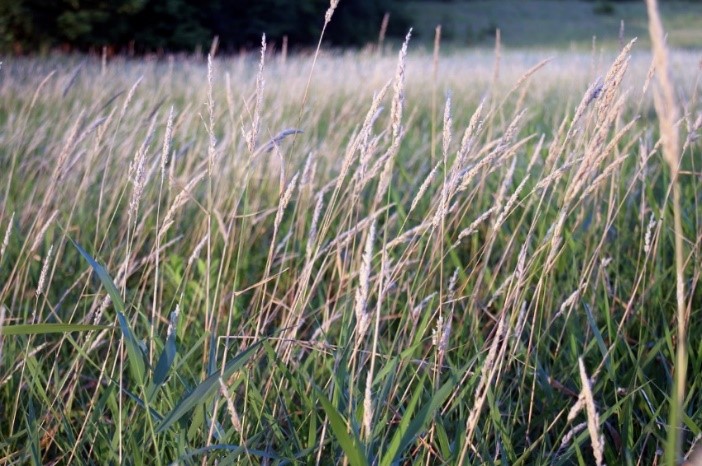
Reed canary grass is harvested by farmers all across the country. In our native state of Wisconsin, for example, the Keppel Farm near LaCrosse reports that it takes harvests and bales hay at least once or twice a summer. “It’s a cash crop we have sold to customers for many years,” Mr. Kepple reports. “Cut at the proper time, it is a highly rated feed for cattle, horses and other livestock.” They mound the hay in lofty stacks until it’s used to feed awaiting ruminants.
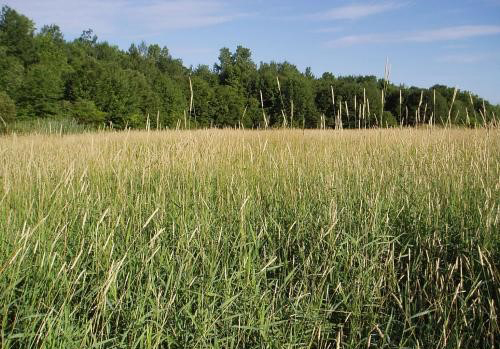
Because reed canary grass can be invasive and spread and create a homogeneous ecology, like ivy or kudzu, we were encouraged to border The Marsh-land with a road which runs the circumference of the harvestable field. We discussed how to make the ugly, impenetrable space have an almost park-like look, bordered by an untamed forest edge on the one side and the tree-lined creek on the other, usually with bails of hay left out in the field.
We dreamed a dream. It helped us press on.
In the midst of the mess, which it still most definitely is and for some time will be, we were given a picture courtesy of our laptop screensaver (at random) that was worth a thousand words to us. And then we searched for others like it, and found another.
So ends the story how we journeyed from a very real Tangled Wood into an Impressionist painting called Haystacks, Morning by Camille Pissarro, and then on into Haystacks by Claude Monet.
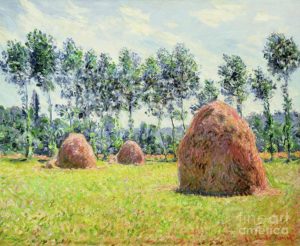
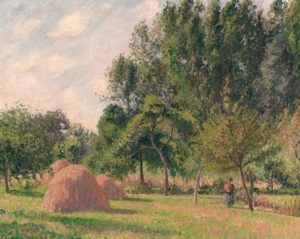
What a gift. Though we know, and are not denying, that Einstein was right:
Plans are only good intentions unless they immediately degenerate into hard work.
Make sharing easy!
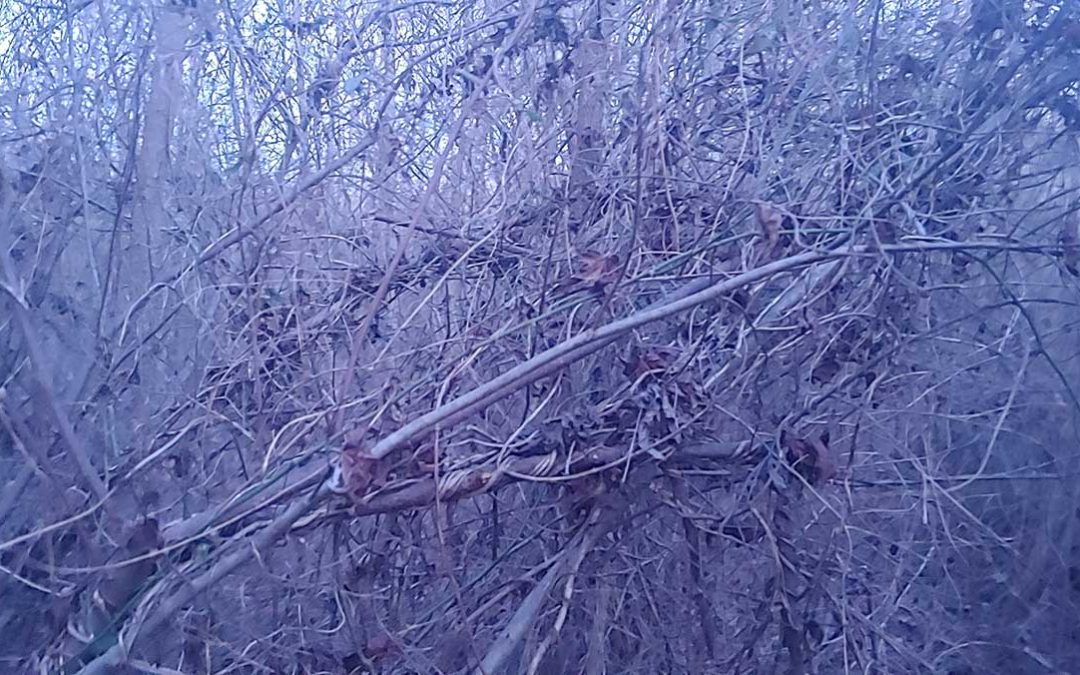
Excellent! Fascinating. And beautiful! Sounds so well thought out and I cannot wait to see the fruit of the good intentions and hard work. Cannot wait to visit the famed Marshland.
What will be the dimensions of the field?
Hoping between 2-3 acres, Charley!
Thrashing through a tangled wood
where briars rake my arms,
I start to ask whether the good
I seek had lost its charms.
What will the endless struggle yield
and is it worth the prize?
Then branches part; a sea-like field
of tall grass cheers my eyes.
It ripples in the wind like hands
that wave me on my way,
and suddenly my trip’s demands
let go. I turn and stray
into that field and dance into
the grasses that could feed
so many. I remembered who
could bind a broken reed
and coax a smoldering wick to flame.
My journey changed its goal
and sought the Lord who knows my name
and clears my cluttered soul.
This is remarkable, Steve. Brilliant!
Love this
Don’t forget this very valuable resource available free to you:
Guilford County Master Gardener Volunteers can help!
To get more information: Call our Master Gardener Hotline at 336-641-2404. Guilford County Master Gardener Volunteers are a trained group of 200+ volunteers who share their knowledge and skills with home gardeners and community organizations. Through educational outreach and community service, they work as non-paid staff members of NC State Extension, answering inquiries and providing research-based information on all areas of plant health and gardening practices to the public free of charge.
Read more at: https://guilford.ces.ncsu.edu/garden-help-questions-answers/
Thanks, Ben! Great resource indeed.
Thank you for sharing this, Jim. Love the feeling it captures, the redemption it envisions and the foresight it offers for creating both utilitarian and aesthetic spaces to enjoy for all who will get to know the area.